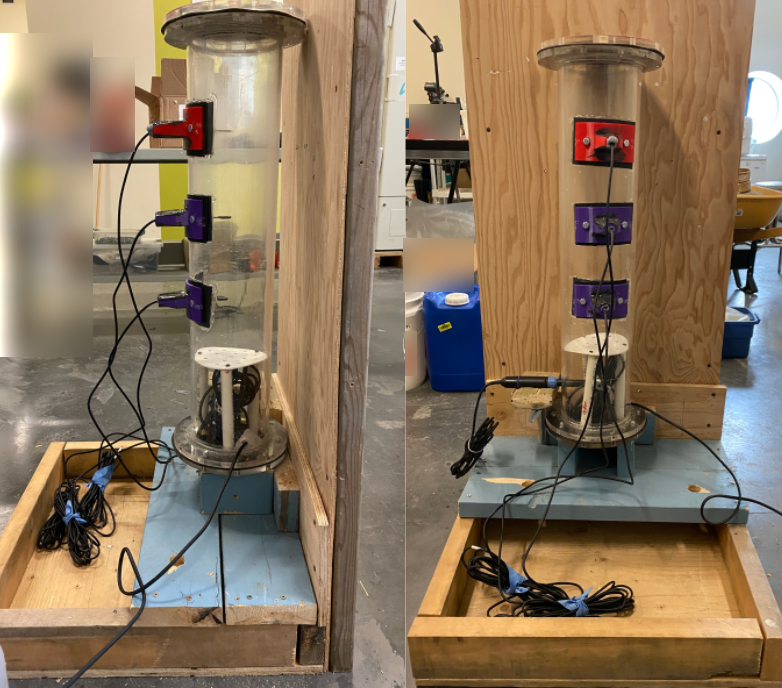 Mine tailings, the by-products of ore beneficiation, are one of the greatest environmental concerns of the mining industry. There are numerous different types of mine tailing management technologies, and while each have their own respective benefits, the one this series of projects focuses on is saturated covers. Primarily because they have been proposed to be an alternative technology to managing mine tailings and the resulting acid mine drainage, as they are proposed to reduce the oxygen diffusion and therefore reducing sulfidic reactions within mine tailings from taking place.
Mine tailings, the by-products of ore beneficiation, are one of the greatest environmental concerns of the mining industry. There are numerous different types of mine tailing management technologies, and while each have their own respective benefits, the one this series of projects focuses on is saturated covers. Primarily because they have been proposed to be an alternative technology to managing mine tailings and the resulting acid mine drainage, as they are proposed to reduce the oxygen diffusion and therefore reducing sulfidic reactions within mine tailings from taking place.
The following lab-scale studies focus on (study 1) the effects of low vs. high water tables within tailings impoundments in conjunction with a monolayer cover system, in mitigating AMD production, (study 2) evaluating the effects of low vs high water tables during freeze and thaw using mathematical modeling, and lastly (study 3) evaluating oxygen diffusion after freeze and thaw via instrumented columns.
Phase 1: Impacts of Water Table Level on Mine Waste Management Using a Saturated Cover
The mine life cycle, from exploration to mine closure can be fast-paced and volatile, therefore careful consideration should be given to remediation planning of mine sites. This lab-scale study focused on the effects of low vs. high water tables within tailings impoundments, in conjunction with a monolayer cover system, in mitigating AMD production. Tailings and cover material were collected from the Faro Mine site in Faro, Yukon.
Phase 2:
This study focused on oxygen concentration and unfrozen volumetric water content within freezing conditions through a series of laboratory column experiments and through an analysis of diffusion coefficients De and Kr, from Fick's first and second law. In order to create a representative model of freezing conditions for the numerical simulations, large instrumented columns were used with an inert material filling, and the evolution of the following parameters were monitored over time and depth: volumetric water content, unfrozen volumetric water content, temperature; and oxygen concentration gradient between the water interface and the top of the cover material (only the partially water-saturated portion).
Phase 3:
Most, if not all, of the experiments done to map oxygen diffusion in saturated covers with negative temperatures have been done with Fick’s first and second laws of diffusion which require the use of unreliable parameters and complicated variables. Previous experimentation also used equipment that directly consumed or impacted oxygen levels in some way.
Taking this into consideration, it was decided that in order to be able to more accurately predict oxygen diffusion in field scenarios modeling would be used. Modeling is not an uncommon method of predicting diffusion in this setting, however, what made this method unique was the setup of the instrumented columns. The variables that were recorded during this process were temperature, percent oxygen and unfrozen volumetric water content.
Team
Dr. Guillaume Nielsen, NSERC Industrial Research Chair, YukonU Research Centre
Chelsey Zurkan, Research Assistant, YukonU Research Centre
Funders
Yukon Mine Research Consortium (YMRC): BMC, Selwyn Chihong, Newmont Coffee, Casino, Alexco, Victoria Gold Corp., Minto Explorations
Phase 2:
Team
Dr. Guillaume Nielsen, NSERC Industrial Research Chair, YukonU Research Centre
Dr. Nicholas Reynier, NRCan
Roselyne Gagne Turcotte, Laval University
Ayesha Ahmad, Research Assistant, YukonU Research Centre
Funders
NSERC
Yukon Mine Research Consortium (YMRC): BMC, Selwyn Chihong, Newmont Coffee, Casino, Alexco, Victoria Gold Corp.